Mica has a variety of excellent properties and is widely used in modern industrial sectors. With the depletion of mica resources, the development and utilization of weathered low-grade broken mica is becoming more and more urgent. Faced with the shortage of raw materials for mica in China and the large amount of foreign exchange imported into India, such as mica raw materials, it is necessary to increase the exploration and development of the use of broken mica resources [1 , 2] . At present, China has found many broken mica resources, but most of mica mining beneficiation plant, sorting backward technology, product quality can not meet demand. The ore sample from the Xiaolin weathering self-mica mine in Suizhou, Hubei Province, aims to explore the beneficiation process and method of low grade weathered mica.
First, the test part
(1) The ore processing raw ore is taken from the surface below 1~2m, and its mica content is 3.30%. After the raw ore is reduced and dried, the mica and quartz are fully dissociated by selecting the raw grinding. The test used XMCQФ180×200 porcelain-lined ball mill . The grinding amount of each test was 500g, the filling volume of medium ceramic ball was 40%, and the grinding concentration was 35%. The grinding time is 15 min.
The ground slurry was sieved and de-slurried with a 74 μm sieve, and the sieved material was sieved with a 950 μm sieve, and the large particles on the sieve were ground with a mortar to dissociate the mica from the quartz. Then, it was sieved with a 950 μm sieve under a 150 μm sieve, and the sieve and the undersize were subjected to panning to remove quartz, and the slurry was repeatedly ground and washed to a quartz-free particle. The washed mica concentrate was dried and weighed, and the mica coarse concentrate sample position was calculated. The results are shown in Table 1. The chemical composition of mica coarse concentrate is shown in Table 2.
Table 1 mica coarse concentrate sample position

Table 2 Chemical analysis results of mica coarse concentrate samples (w/%)

(2) Large sample test
1. Beneficiation test procedure [3] : See the figure below.

Mineral processing test flow chart
2. Grinding and deliming: The ore is selectively ground by XMCQФI80×200 porcelain-lined ball mill. The grinding amount per test was 5009. The grinding ball filling amount is 40%, the grinding concentration is 35%, and the grinding time is 15 minutes. The ground slurry was sieved with a 950 μm sieve to remove the ceramic balls and the large mica and quartz nectar, and returned to the ball mill for re-grinding. The sludge was eluted with a 74 μm sieve. The sieve material is classified and removed by a spiral chute.
3. Spiral chute beneficiation and grading: the sieve eluted mud mica is formulated into a slurry with a solid concentration of 10% and stirred by a mixer. During the mixing process, the slurry is flowed into the spiral chute to classify, and three kinds of products, namely mica concentrate, are produced. Mine and sand. Fine mica was added 0.2% sodium hexametaphosphate for desliming, followed by shaking and separation of the mica fine tailings. The medium mine was ground by a ball mill for 15 min, and then the sludge was eluted with a 74 μm sieve. Finally, the fine mica was sorted by a shaker. The results of the spiral chute sorting are shown in Table 3.
Table 3 spiral chute sorting results

From the data in Table 3, the (pure) mica content was calculated to be 20.06%, which was smaller than that measured by manual grinding and washing. This may be due to the loss of mica concentrate during the beneficiation process.
The distribution of mica in the spiral chute beneficiation product is shown in Table 4.
Table 4 Distribution of mica in various products of spiral chute ore dressing

The data in Table 3 and Table 4 indicate that the spiral chute sorting mica can achieve a discarding tailings (mud) of more than 70%. The grade of mica concentrate is 80%. The (recycling) distribution rate of mica in concentrate is greater than 92%.
It shows that the efficiency of the spiral chute sorting mica is very high, which can greatly reduce the amount of ore feeding in the selected sawing machine. It is of great significance for reducing the number of selected shakers, the construction area of ​​the workshop and the capital investment.
4. Shaker selection: The experiment uses XCY-73/1100×500 (rnm) groove shaker. The bed surface has a lateral inclination of 1.1°, a longitudinal inclination of 0.5°, a stroke of 10 mm, a stroke of 330 times/min, and a bed size of 1100×500×430 (mm). The slurry concentration is controlled at 7%. The shaker bed sorts the fine mica product obtained by the spiral chute dressing by shaker to further remove the sand trapped in the mica sheet.
5. Classification: The mica concentrate was classified by a sieve of 150 μm, 74 μm, 44 μm, and 30 μm, respectively. Five kinds of product grades of +150 μm, -150 μm + 74 μm, -74 μm + 44 μm, -44 μm + 30 μm, and -30 μm were obtained. Since the preparation for pearlescent mica requires a mica particle size of less than 150 Um. So no further processing of +150um mica.
(III) The mica concentrate chemical purification test is carried out by pickling and removing iron from four grades of mica concentrate with sulfuric acid and oxalic acid. The test conditions were as follows: mica pulp concentration 30%, sulfuric acid: mica = 1:5, oxalic acid: mica = 0.05:1, soaked at room temperature for 4 h, and then boiled for 1 h, then cooled, washed and filtered. The test uses oxalic acid and sulfuric acid mixed acid to chemically purify mica. Oxalic acid and iron ions are easy to form complexes, and the amount of sulfuric acid can also be reduced. In addition, since mica contains carbonate, a small amount of hydrochloric acid is added to the chemical treatment. The silicate impurities affect the surface brightness and gloss from the mica. A certain amount of sodium salt is added and heat treated to make the mica surface appear smooth and lustrous. After heating for 30 minutes, the mixture was cooled, washed, filtered, and dried to obtain a final product from mica powder. The whiteness value and Fe 2 O 3 content of each grade of mica after chemical purification treatment are shown in Table 5 and Table 6, respectively.
Table 5 Whiteness of different grades of mica after chemical purification

Table 6 Content of Fe 2 O 3 in the sample after chemical treatment

Second, the conclusion
1. Hubei Suizhou Linyunmu Mine is a low-grade weathering type self-mica. After beneficiation and chemical purification treatment, it can process high value-added mica concentrate powder and can be used as mica raw material for pearlescent pigment. This study provides a technical approach for the effective development and utilization of low-grade weathered mica.
2. For mica ore with iron content of 1.27%, using spiral concentrator rough selection, shaker sorting, re-grinding, shaker re-election and chemical purification, the grade can be more than 30% and the self-degree is more than 80%. High-quality self-mica concentrate powder with low Fe 2 O 3 content.
3. The iron form in the ore is mainly thin film iron. With the improvement of the degree of grinding, the dissociation degree of the mica layer is also improved, and the impurity iron oxide interposed between the mica sheets is dissociated. Therefore, the size of the processed mica is The finer the, the lower the Fe 2 O 3 content. According to the different mica particle size, the Fe 2 O 3 content is reduced by 25% to 43.3%, respectively.
4. The by-product is mainly powdered quartz with a yield of about 45%. It can be used as glass raw material after de-sludge treatment, and is used to produce glass-ceramic or cement and building materials. Another clay (yellow mud) with a yield of about 25% can be used as backfill for building clay bricks or cultivated land.
5. It is suggested that the beneficiation process of Suizhou weathering type crushed from mica is: raw ore → grinding dissociation → high frequency fine screening deliming and grading → rough selection of spiral beneficiation → shake selection → acid, alkali bleaching → dehydration drying → finished packaging .
references
[1] Ren Yaowu. Industrial use and development of broken mica [J]. Inner Mongolia Geology. 1998 (3): 17.
[2] Song Gongbao, Guo Ying et al. Overview of mineralogy research and development and utilization of muscovite mineral resources in China [J] Journal of Southwest Institute of Technology. 2000.15(2): 73-76.
[2] Li industry, Pengzhang Qi, Li Jun muscovite Mineral Processing Study Suizhou, Hubei [J] non-metallic ore. 1994 (2): 23-26
Author unit
Shijiazhuang Institute of Economics Materials Research Institute (Wang Cheng)
School of Resources and Environmental Engineering, Wuhan University of Technology (Wang Cheng, Lei Shaomin, Yuan Lingqun, Bai Chunhua, Qu Yi)
Fluorescence Spectrometer
Fluorescence spectrum can provide excitation spectrum, emission spectrum, fluorescence intensity, quantum yield, fluorescence lifetime, fluorescence polarization and other more physical parameters. These parameters reflect various features of the molecules , and through which can obtain more information of the tested molecular. CNI launched fluorescence Spectrometer with the characteristics of rapid analysis and accurate measurement, is usually used in crystal, rare earth elements and other fluorescence spectrum detection. Fluorescence spectrum analysis and measurement is special in high sensitivity, strong selectivity, micro samples, simple operation, etc.
â– Composition of Fluorescence Spectrometer

|
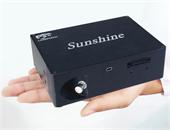
|
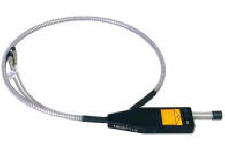
|
|
Laser Source
|
Fiber Optic Spectrometer
|
Probe
|
|
A variety of linewidth options at :
257, 360, 405, 473, 514.5, 532, 633, 660,
785, 830, 980, 1064 nm
|
High sensitivity;
Up to 80% quantum efficiency;
Spectral range 200- 1100nm
|
Excitation wavelength;
360, 405, 532, 785, 830 nm...
|
â– Fluorescence Spectrometer Solution

|
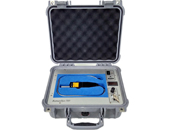
|
|
Combined Fluorescence Spectrum System
|
Portable Fluroescence Spectrometer
|
|
Fast connection, flexuble operation.
Wavelength is optional according on
Customer`s acyual requirements.
|
Simple measurement and easy operation,
extemal power supply vehicle- mounted charger,
Dustproof, anti- vibration, arti-glare interference...
|
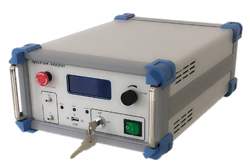
|
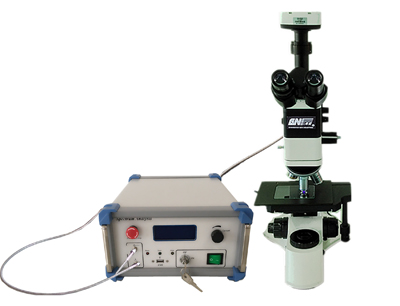
|
|
Desktop Raman Flurocence Spectrometer
|
Micro Flurocence Spectrum Measurement System
|
|
Build- in narrow line width laser- power
adjustable, high sensitivity spectrometer-
used for weak signal detection
|
It combines micro system and Raman
system which greatly tacilitates the Raman
micro area detection
|
â– Sample Fluorescence Spectrum

Fluorescence Spectrometer,Fluorescence Spectra,Fluorescence Spectroscopy Instrumentation,Atomic Fluorescence Spectroscopy
Changchun New Industries Optoelectronics Technology Co., Ltd. , https://www.opticsqm.com














